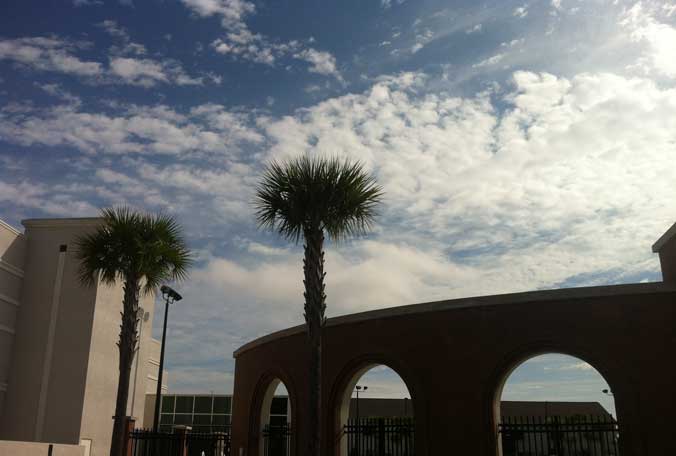Frequently Asked Questions about Climate Change
Over the last few decades, there has been controversy questioning the reality of climate change. Much of the doubt in the climate change debate has been generated by the mass media, but no peer reviewed scientific publication suggests that anthropogenic (originating in human activity) climate change is a myth. The human population is exponentially growing, resulting in excess stress being placed on both terrestrial and aquatic ecosystems. Anthropogenic factors like pollution, overfishing and now climate change are threatening many socioeconomic resources we currently take for granted such as our fisheries and freshwater reserves. This blog post will help answer some of the frequently asked questions about climate change.
- What is the difference between weather and climate?
Weather is what occurs from day to day at a specific location, whereas climate is an average trend over many years for a specific location. - What evidence do we have for climate change?
We have historical climate records from ice cores that indicate our global average temperature has increased by 1.4 °F in the last 100 years. The last decade (2000-2010) was the warmest on record. We have experienced changes in precipitation, storm occurrence, severe droughts, larger than normal seasonal melt of land based glaciers and increases in sea surface temperatures. - How do we know what is part of a natural cycle and what is anthropogenic?
It is true that Earth can go through cycles that have a fluctuating climatic trend. However, since 1750 C.E., we have experienced a 30% increase in H+ ions (Orr et. al. 2005) in our oceans resulting in a decrease in ocean pH. We have also witnessed an unprecedented increase in atmospheric CO2 concentrations since the industrial revolution which is accelerating the rate of global warming. The projected warming rate of 3°C/5.4°F for the 21st century is 5x’s faster than the warming rate documented in the 20th century (Kerr 2004). Yes, there have been times when Earth’s climate was warmer and when there was more CO2 in the atmosphere. For example, during the Paleocene-Eocene 55 million years ago was characterized by a sudden increase in CO2 in both the atmosphere and oceans elevating temperatures by 5°C within 10,000 years (Zachos et al. 2001). However, those changes took place over 10,000 years. The rates of CO2 and temperature increase we are currently experiencing are occurring within 100 year time period. The figure below is from the Environmental Protection Agency. It shows a model that highlights how recent warming is a result of human activity.
Model showing humans influence on climate. Photo credit: Environmental Protection Agency - Those sound like small changes in temperature. How can such a small change effect human populations?
The EPA cites that for every 2°F of warming we can see changes such as up to a 15% reduction in crop yields, a 10% increase in rainfall during the heaviest events (increased flooding), a 10% decrease in stream flow resulting in river basins drying up and a 200-400% increase in wildfires in the Western U.S. We will also see an increase in sea-level rise in coastal regions, as well as bleaching of coral reefs. Loss of coral reefs will reduce fisheries production and potential medicinal products that we currently harvest from the ocean. - What can we do about climate change?
There are several solutions to climate change that can make a difference. We can start by following the three Rs: reduce, reuse and recycle. As a population, we waste so much. By recycling, we can reduce the energy needed to produce new plastic and aluminum products. Car pooling and public transportation can help reduced atmospheric emissions. We can also invest in renewable resources like wind and solar energy (it’s fairly cheap and easy to install a solar panel on your house). We can also make a difference by making informed decisions when voting in regards to new regulations and policies that may have impacts on climate and carbon emissions.
For more information on climate change, check out my sources:
- Kerr, R. 2004. Three degrees of consensus. Science.305: 932-934.
- Orr, J.C., Fabry, V.J., Aumont, O., & Bopp, L. 2005. Anthropogenic ocean acidification over the twenty-first century and its impact on calcifying organisms. Nature.437:681–686.
- Zachos, J., Pagani, M., Sloan, L., Thomas, E., & Billups, K. 2001. Trends, rhythms, and aberrations in global climate 65 Ma to Present. Science. 292: 686-693.






